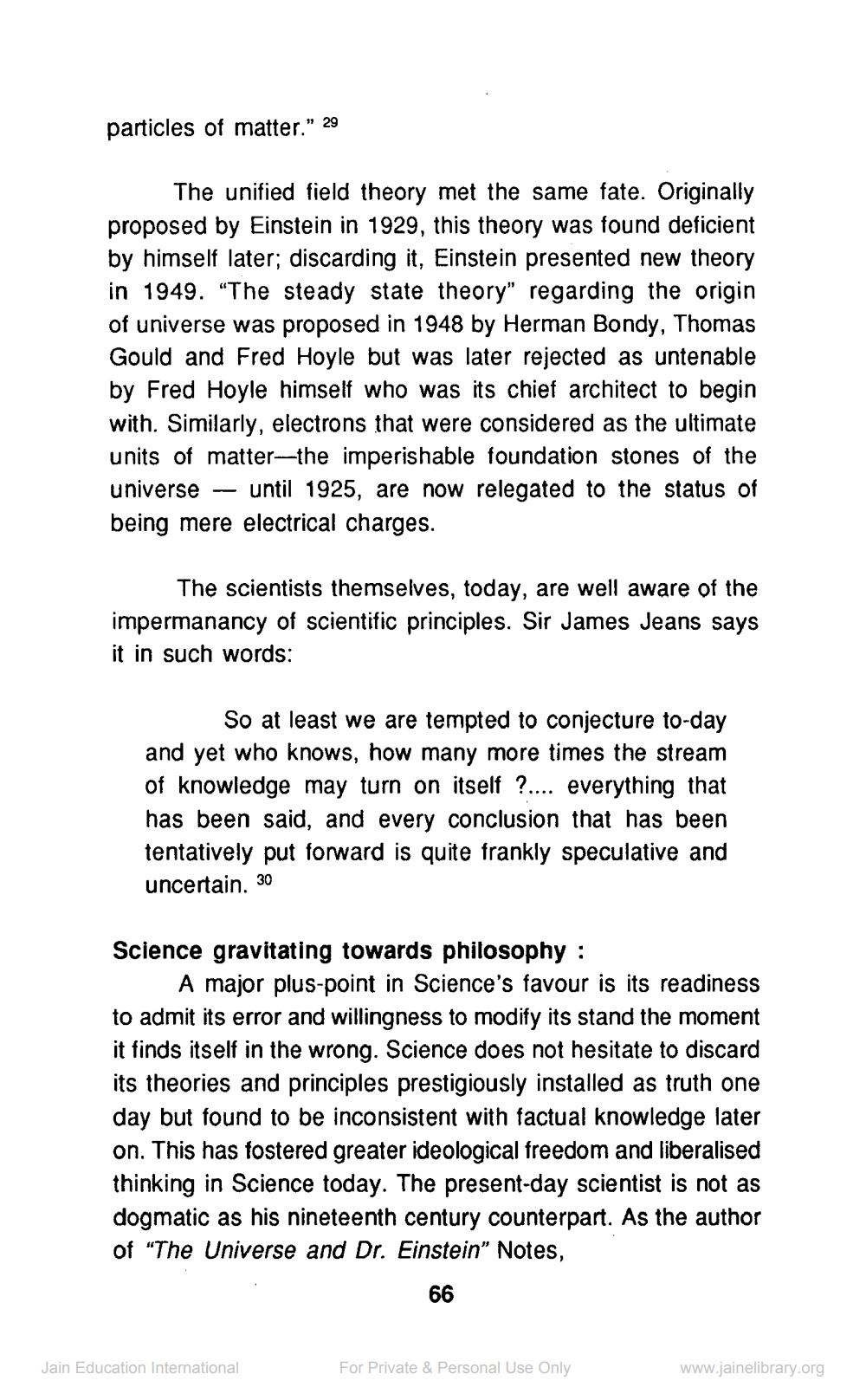________________
particles of matter." 29
The unified field theory met the same fate. Originally proposed by Einstein in 1929, this theory was found deficient by himself later; discarding it, Einstein presented new theory in 1949. "The steady state theory" regarding the origin of universe was proposed in 1948 by Herman Bondy, Thomas Gould and Fred Hoyle but was later rejected as untenable by Fred Hoyle himself who was its chief architect to begin with. Similarly, electrons that were considered as the ultimate units of matter—the imperishable foundation stones of the universe – until 1925, are now relegated to the status of being mere electrical charges.
The scientists themselves, today, are well aware of the impermanancy of scientific principles. Sir James Jeans says it in such words:
So at least we are tempted to conjecture to-day and yet who knows, how many more times the stream of knowledge may turn on itself ?.... everything that has been said, and every conclusion that has been tentatively put forward is quite frankly speculative and uncertain. 30
Science gravitating towards philosophy :
A major plus-point in Science's favour is its readiness to admit its error and willingness to modify its stand the moment it finds itself in the wrong. Science does not hesitate to discard its theories and principles prestigiously installed as truth one day but found to be inconsistent with factual knowledge later on. This has fostered greater ideological freedom and liberalised thinking in Science today. The present-day scientist is not as dogmatic as his nineteenth century counterpart. As the author of "The Universe and Dr. Einstein" Notes,
66
Jain Education International
For Private & Personal Use Only
www.jainelibrary.org




